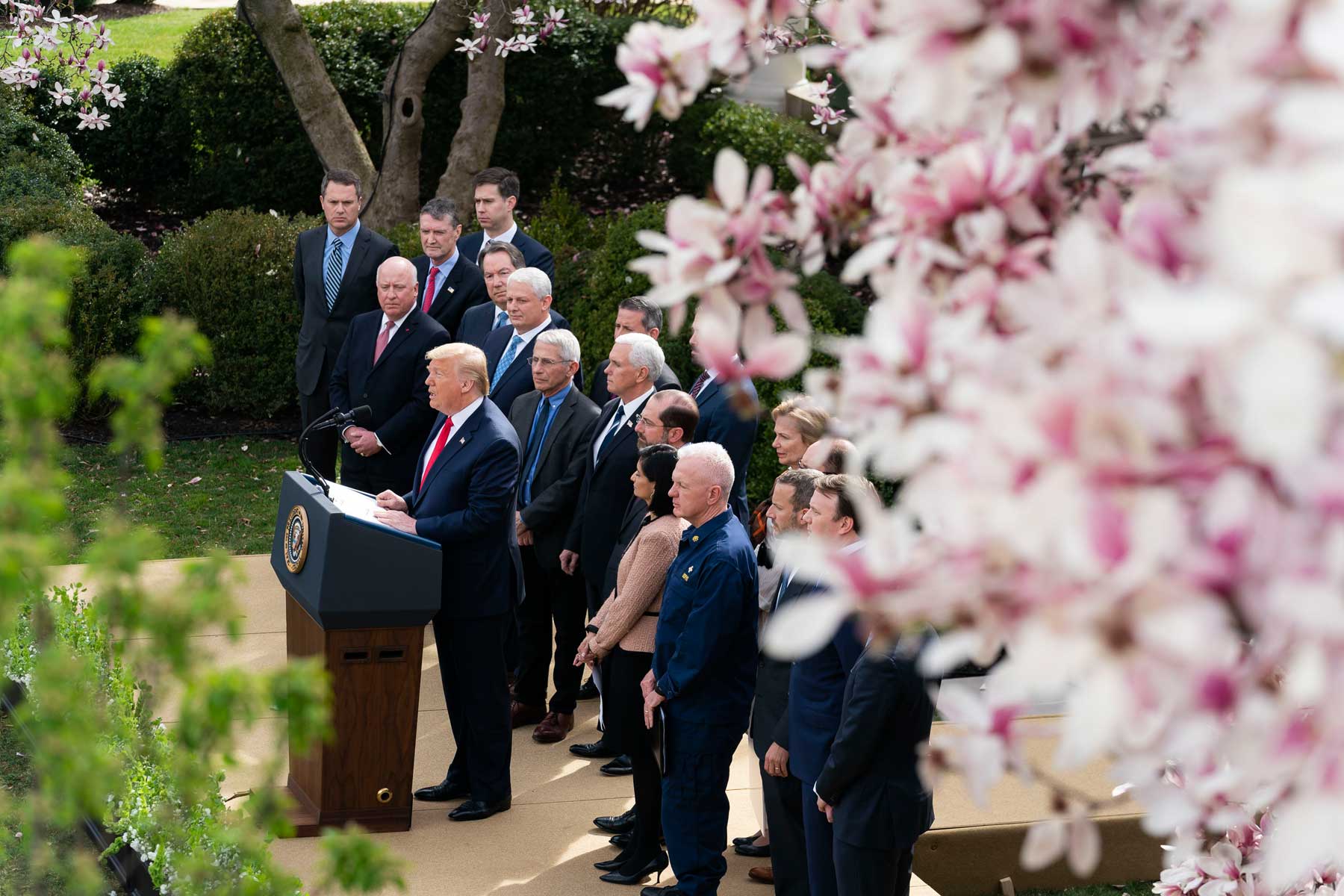
Weeks after the novel coronavirus (COVID-19) went international and began spreading exponentially, U.S. President Donald Trump on Friday, March 13 officially declared a national emergency, which will funnel more federal aid to states and municipalities to treat patients and combat the spread of disease.
In a press conference on the White House Rose Garden, the president declared a state of emergency amid the spread of the COVID-19 virus, a proclamation that retroactively took effect on March 1, 2020.
“Americans are the strongest most resilient people in the whole world and we will defeat this threat,” the president said, flanked by Vice President Mike Pence, whom Trump assigned to lead the COVID-19 task force within the White House, and other administration and public health officials.
“When America is tested America rises to the occasion,” the president said, noting that the effort to combat the spread of disease depends on the actions of all Americans whose “short-term compromises will result in a long-term gain.”
By declaring a national emergency, Trump bestowed emergency authority to the Department of Health and Human Services (HHS) “to temporarily waive or modify certain requirements of the Medicare, Medicaid and State Children’s Health Insurance programs…throughout the duration of the public health emergency,” according to the official White House proclamation.
Among those who are priorities for this state of emergency are senior citizens, who are more likely to contract the pathogen and die from it. Pence noted that the best way to prevent the spread of disease is to monitor hygiene and protect “the most vulnerable.”
“Practice common sense, practice good hygiene and look out for the most vulnerable. It’s especially important right now that we look after senior citizens with chronic underlying health conditions who are the most vulnerable in our communities,” Pence said, giving lip service to the administration’s efforts to prioritize funding health care centers for the elderly.
Trump’s announcement was scheduled an hour after House Speaker Nancy Pelosi made a public statement at the Capitol detailing a new House bill that would provide free coronavirus testing for all Americans, even those who are uninsured.
“We can only defeat this outbreak if we have an accurate determination of its scale and scope,” said Pelosi, who negotiated with Treasury Secretary Steve Mnuchin for the bill.
When asked about the bill during the Rose Garden press conference, Trump said Trump downplayed the bill’s effectiveness in We don’t think the Democrats are giving enough. They’re not doing what’s right for the country.”
Sequentially, Trump indicated he opposes the Democratic-backed bill (as does House Minority Leader Kevin McCarthy), but Pelosi was positive that the bill will pass the House on Friday. (As of press time, the bill’s fate is still unknown.)
Despite the calls from public health officials and lawmakers to increase testing for Americans, Trump deemed mass testing unnecessary, saying, “We don’t want everyone taking this test. It’s totally unnecessary. This will pass. This will pass, and we’ll grow stronger from it.”
Trump’s declaration follows a confirmed rumor that the Trump administration in 2018 fired the U.S. pandemic response team as a way to cut costs within the administration. This response team was an official group of White House officials responsible for heading the U.s. response in the event of a deadly pandemic.
Though there were early warnings from public health officials of a new coronavirus that would potentially evolve into a pandemic, then-national security adviser John Bolton disbanded the global health security team in the spring of 2018.
This led to the “abrupt departure” of Rear Adm. Timothy Ziemer from the National Security Council who was head of the pandemic response team, the Washington Post reported on May 10, 2018.
Though the termination of the pandemic response team initially went under the radar when it was first reported in 2018, the news began trending this week after Democrats and Republicans on the hill began criticizing the Trump administration for being ill-prepared for the current outbreak of COVID-19, of which 47 states currently have cases.
But Trump claimed no responsibility for the disbandment of the pandemic response team, saying, “I just think it’s a nasty question… You say we did that, I don’t know anything about it,” adding that he is “very proud” of the efforts of his administration on conquering the disease.






